April 29, 2024 | 07:02 GMT +7
April 29, 2024 | 07:02 GMT +7
Hotline: 0913.378.918
April 29, 2024 | 07:02 GMT +7
Hotline: 0913.378.918
The coastal areas of Binh Thuan Province are home to a high density of bivalve mollusks living in the subtidal zone.
However, according to Mr. Huynh Quang Huy, Director of Binh Thuan Fisheries Sub-Department, in recent years, specialty seafood areas near the coast have been exploited until exhaustion. Five typical seafood species with high economic value, including scallops, shells and clams have been seriously reduced in amount.
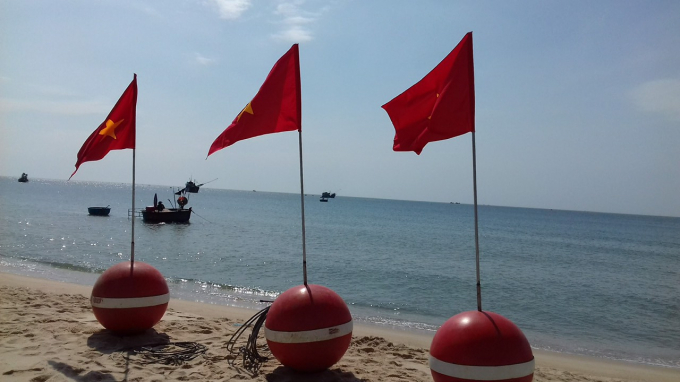
Fishermen in Thuan Quy Commune (Ham Thuan Nam District, Binh Thuan Province) mark the sea surface by dropping concrete and iron crates..., to prevent boats from entering illegal fishing areas at the same time attract seafood species to live in. Photo: KS.
The ecosystem and the seabed have been destroyed resulting in losses of habitats and food for many aquatic species. Some coral reefs, seaweed beds and seagrasses areas with high biodiversity are regularly invaded. The marine environment and ecosystems are seriously affected with many species in danger of extinction.
In addition, violations of the law on exploitation and protection of aquatic resources are more common, especially the use of prohibited fishing gears, causing destruction of the environment and resources. Measures to handle violations have not been strictly enforced.
Some fishermen have very low awareness of law observance because they just pay attention to make profits despite warnings from authorities.
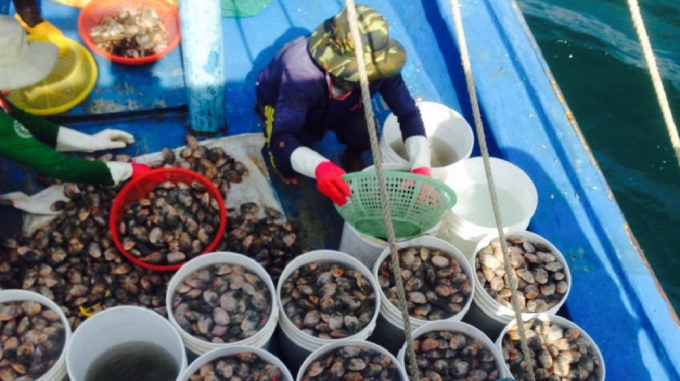
After many years of persistent protection, the resources of scallops and shellfish are now very abundant in the Thuan Quy sea. Photo: KS.
According to Mr. Huy, the prevention of violations in exploiting aquatic resources is extremely difficult because the province’s professional forces and equipment have not met the requirements of their tasks. The province has only 41 staff who are not equipped with adequate facilities for patrolling and controlling the violations. Currently, the force only has 3 ships (2 ships have been used for over 20 years) and 5 canoes with small capacity, low speed, and being degraded due to long-term use. Funding for activities in the protection of aquatic resources is also limited...
Meanwhile, the fishing grounds under the provincial management are large with an area of about 14,000 square kilometers of onshore and offshore, twice the land area. A very large number of fishing vessels (nearly 10,000 inside and outside the province) are operating there.
Violations happen very commonly and are complicated while the law enforcement is relying solely on state resources, therefore, it will not be highly effective to control without the participation of local people.
Mr. Huynh Quang Huy analyzed the vicious circle that fishermen are facing is about the low income and poverty that leads to fishermen focusing on overfishing, making resources decline and then returning to low income and poverty again.
Faced with the situation, a co-management model will help solve it. This has been proven practically in the model of community management and exploitation in Thuan Quy Commune, Ham Thuan Nam District.
The model has been implemented since 2015, with funding from the Global Environment Fund project to boot the recovery of scallops resources in the context that an over-exploitation due to their high economic value is gradually causing depletion and exhaustion.
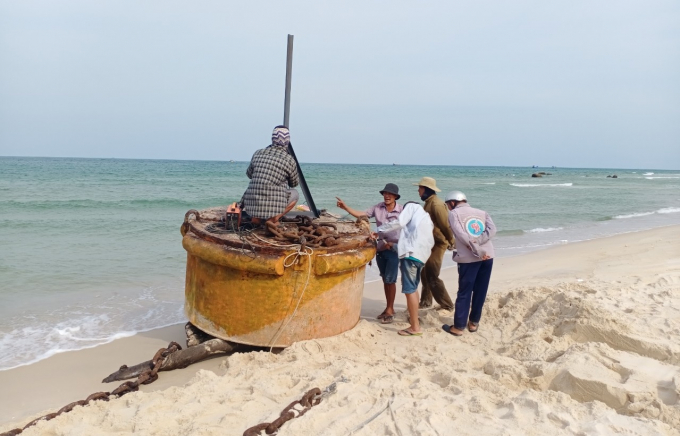
To prevent the trawler from encroaching to the shellfish protection zones, Thuan Quy fishermen set up concrete scrubbing points and iron crates to mark them. Photo: KS.
Mr. Dong Van Triem, Chairman of the Association for Scallops Management and Exploitation of in Thuan Quy Commune, said: “Initially when implementing the model, Thuan Quy fishermen were not very interested because they felt it was quite new. Moreover, they thought that aquatic resources are ‘God-given’. However, when authority officials came to help them understand the benefits of the model, they were ready to participate and joined in with them.”
According to Triem, before implementing this model, fishermen are trained on co-management methods and loan funds (interest-free and revolving loans for members).
Along with that, in order to restore the depleted resources of scallops, the project gave financial support along with mobilized contributions from fishermen to release hundreds of tons of young scallops into the sea. The association also organized to mark the limited fishing sea areas by setting concrete scrubbing points and iron crates, etc., to prevent ships from entering at the same time attract more marine species to live there.
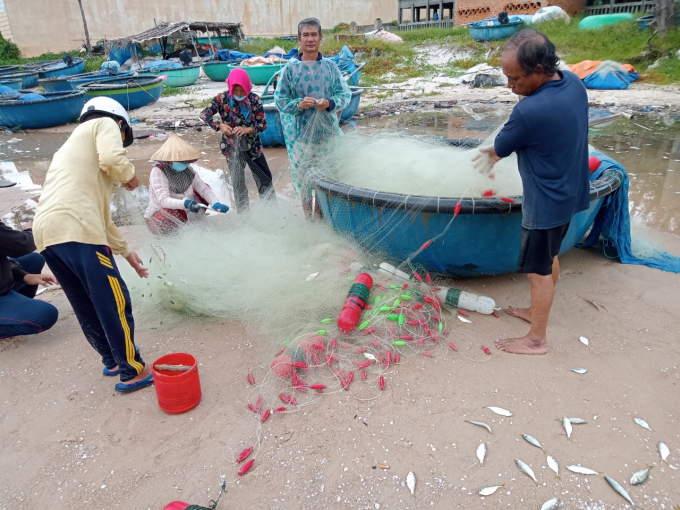
Protected fishing areas have attracted a lot of aquatic species to come to live there. Fishermen are rowing baskets to catch fish there to earn extra income. Photo: DT.
Mr. Dong Van Triem, Chairman of the Association for Management and Exploitation of Scallops in Thuan Quy Commune, said that in order to protect aquatic resources, the Association assigns its members to guard every day in marked areas so that to prevent boats from entering to exploit there.
Besides, the Association also opened a shop to display and sell seafood products to people inside and outside the commune. In the long term, the Association is looking to undertake more models of community tourism.
Mr. Nguyen Ngoc Hai, Vice Chairman of Thuan Quy Commune People's Committee assessed that the implementation of the co-management model in Thuan Quy Commune brings many benefits. It has helped not only unite fishermen in protecting aquatic resources, regenerate the aquatic resources, but also attract many other species to reside at the fishing sites thus improving livelihoods and raising the local income.
In particular, this model has helped fishermen no longer think that aquatic resources are “God-given”, but increase their awareness on protection and not consciously violate fishing regulation such as no longer use of explosives, electric shocks and young scallops exploitation during the forbidden time…
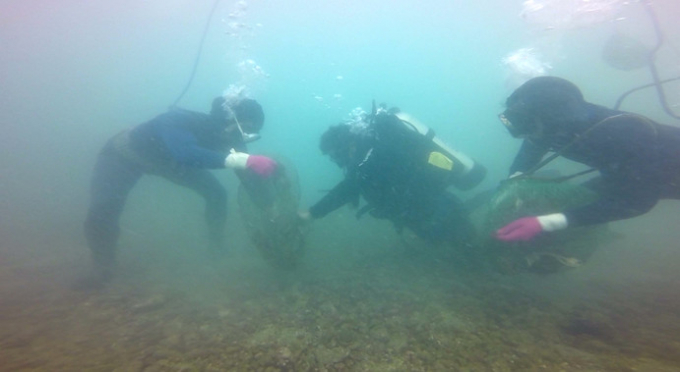
The scallops resources in the waters of Thuan Quy Commune, from almost nothing, now have been restored. Photo: BT.
According to the Binh Thuan Fisheries Sub-Department, up to now, Binh Thuan Province has built and operated 3 fisherman community organizations participating in co-management of aquatic resources under the 2017 Fisheries Law.
The good news is that community organizations have helped restore the spawning grounds of scallops resources in Thuan Quy and Phuoc The Communes, Tuy Phong District (before this resource was almost non-existent).
In order to further promote community organizations, in the coming time, the province will consolidate implementation of co-managment model in Thuan Quy, Tan Thanh and Tan Thuan Communes (Ham Thuan Nam District) and Phuoc The Commune (Tuy Phong District). At the same time, it will replicate the model to other potential localities. Along with that, it will implement policies to support the development of co-management in the provincial areas.
Translated by Linh Nguyen
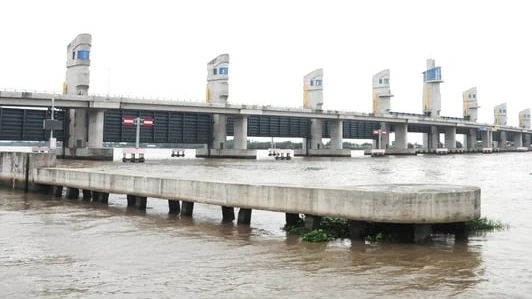
(VAN) Large-scale irrigation projects in the Mekong Delta have safeguarded a beneficiary area spanning more than 1 million hectares, significantly mitigating damage caused by drought and saltwater intrusion.
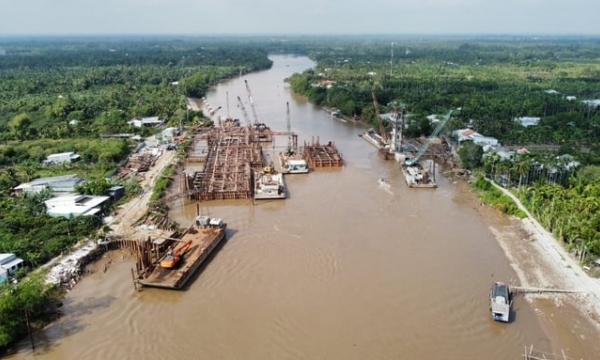
(VAN) Residents along the south bank of the Hau River are anticipating the Rach Mop lock by the end of 2024, along with projects to fortify the irrigation system to prevent saltwater intrusion.
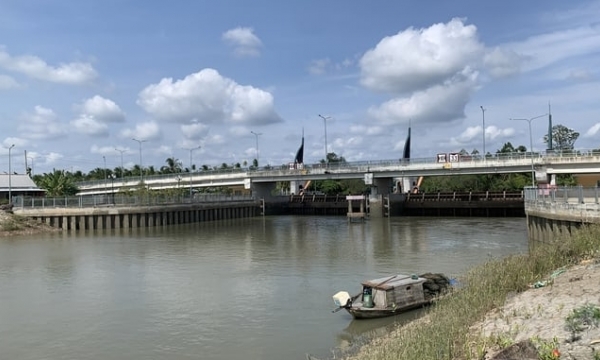
(VAN) The Bong Bot - Tan Dinh sluice delivers fresh water to meet the production demands of thousands residing in Tra Vinh province's coastal areas.
/2024/04/26/0500-3-135847_403.jpg)
(VAN) According to Dr. Dao The Anh, if indigenous varieties that are highly nutritious and adapt to climate change can be developed, the community will greatly benefit.
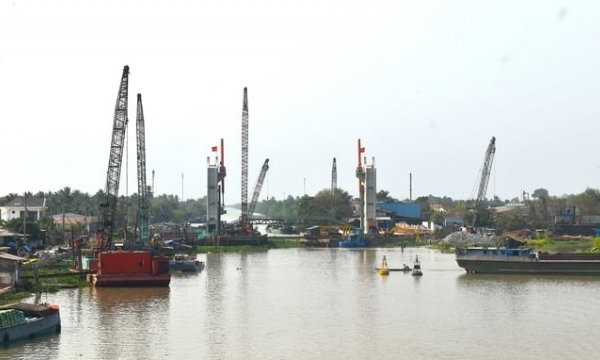
(VAN) The Nguyen Tan Thanh sluice is crucial in preventing salinity and storing freshwater to meet the daily needs of over 1.1 million residents in Tien Giang and Long An provinces.
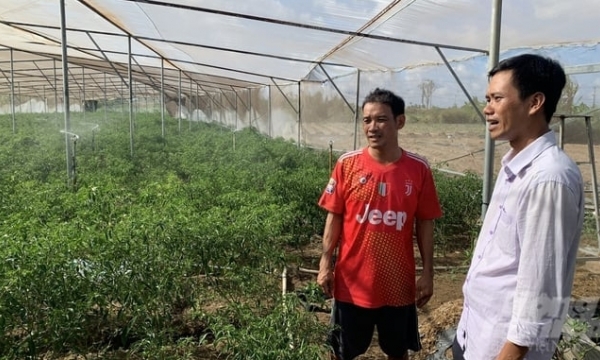
(VAN) The project, sponsored by the European Union, is implemented in Dong Thap, Kien Giang, and Tra Vinh provinces, with a total funding of 4.2 million Euros.
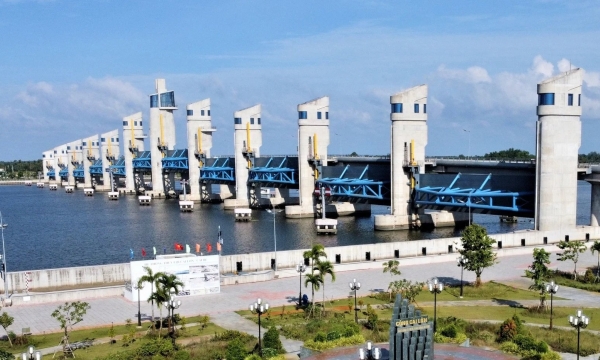
(VAN) In the heart of the Mekong Delta, the Cai Lon and Cai Be sluice gates act as guardians, halting the incursion of salty tides deep into the inland fields and managing freshwater resource distribution.